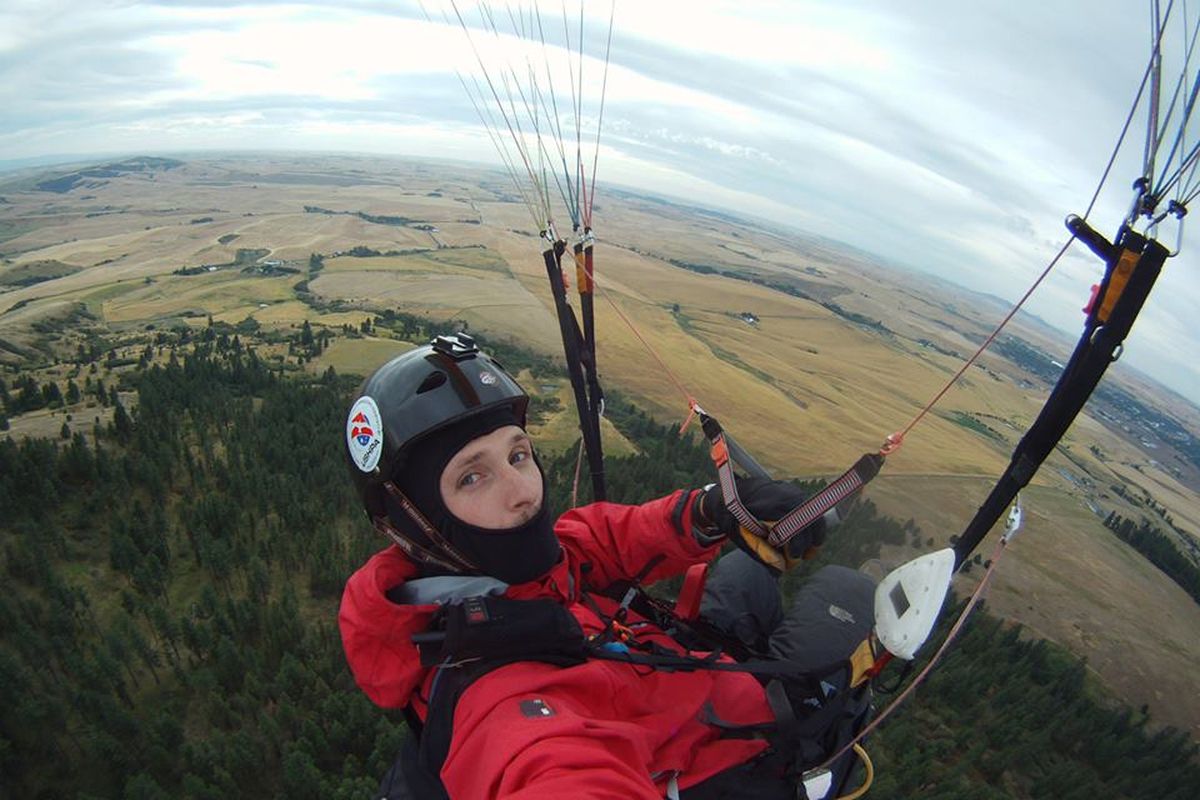Spokane group ministers for free-flight sports

Spokane free-flight enthusiasts get together as a loose-knit group to chute the breeze.
The local chapter of the U.S. Hang Gliding and Paragliding Association goes by title Center of Lift on Facebook.
Steve Baran, who prefers a hang glider for its capabilities in higher wind conditions, says Center of Lift is one of the rare “biwingual” groups that combine members of both motorless flight styles.
“Hang gliders and paragliders have slightly different needs at launch sites, but our group communicates well, and that’s beneficial to all of us,” he said.
Each craft has its virtues, but paragliders have a definite advantage if they’re forced to land far from a support vehicle. “They can wrap their stuff up in a smaller pack and hitch-hike,” he said.
Members share flight data that boosts safety and expands opportunities. They also team to identify good launch sites on public and private land.
“We learn a lot about meteorology,” Baran said. “The weather is our playground.”
Through a national network they keep track of milestones in the sport, such as the Texas flyers who traveled 475 miles in an 11-hour endurance test.
All gliders have a bucket list of flights they want to make around the country or beyond. For example, in August Baran plans to join a California group that gets special permission to fly off spectacular launches in Yosemite National Park, including Half Dome.
But most of his flying and practicing is from local sites he can reach after work or on the weekend.
Group outings are always dependent on the weather. Without the right air, the best-planned event won’t get off the ground.
Sometimes the air can be too good.
“Occasionally the thermals are so strong you can’t get down,” he said. “It’s happened to our members on Tekoa Mountain and Colville Mountain.
“That’s usually OK during the daytime, but when they last into darkness it can become dangerous avoiding fences and power lines when you can finally land.”
Reliable flying routes are documented on their websites.
“Everybody keeps their eyes on Chelan Butte,” he said. “It’s a good launch for distance flights. Anytime we think we can get up 8,000 to 10,000 feet we make a dash for it.”
The group had planned to fly off Tekoa Mountain north of Tekoa next weekend. “We’ll try to fly, but it’s also Slippery Gulch Days in town, so there’s another good excuse to go there,” Baran said.
The fliers also have identified good take-off sites near Chewelah.
The group has received a good reception from most landowners when they ask permission to fly from the updrafts off a choice high point on private property, he said.
“Usually they think it’s cool and they want to come and watch,” he said.
The group has formed relationships with some landowners to abide by their conditions for access and get keys to locked gates.
“I think the main reason we are able to acquire places to fly on private land is largely due to how much we cherish our sports – and how we’re able to communicate that to the landowner,” he said.
“This translates into us being very good stewards of the land. We’re very low impact. We don’t leave much of a trace on the property and we are more than willing to help the landowners out if needed.”
The local flyers are especially respectful and appreciative for the access they get to Tekoa Mountain, one of the best launch sites in the region.
When the property owners close access during high fire danger and when the road is extra wet, “we spread the word quickly among our group,” he said.
“We also require pilots from outside the area to contact us first and go onto the land with a member of our group.”
The general rule for all private land access is to call ahead, keep vehicles on roads, maintain gates and respect the land, he said.
“With continued access we’ve gotten to know the landowners pretty well and even limit our own access when we might conflict with other activities, like crop farming and hunting by friends of landowners. It’s all about doing the right thing really.”
The other key is to keep gaining new places to fly each year, he said. “That way we spread our use out and don’t become an unwanted guest.”